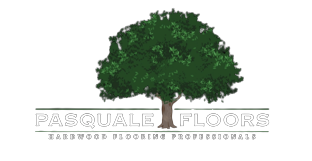
What are the most common ways my wood floors can get damaged?
Scratches/Gouges: Our most common call. About once a week, we get calls from homeowners, appliance stores, plumbing companies, movers and other home service companies explaining how they have damaged the wood floors. Almost every incident involves somebody dragging something across the wood floors like a bed, couch, table, refrigerator, dishwasher etc. Why does this happen? Mostly because people are in a rush and assume that wood floors are bulletproof and will only get damaged under extreme conditions (not true). They scratch, dent, gouge, cup, crown, shrink and expand under stress.
Water Damage (Too much): This is a close second. For example, the toilet supply line broke and flooded the floors, or the refrigerator water line had a slow leak and the floors started cupping (the edges are curling and higher than the center of the board). Dishwasher supply lines can leak slowly and cause the floors to start moving and swelling. Roof leaks let water sit on the floor and can cause crowning (center of the board is higher than the edges). These may be harder to avoid.
Water damage (Too little): This is harder to detect. On the opposite end of the spectrum, lack of moisture can also cause issues. Ideally, we want to see the indoor temperature between 60-80 degrees with a relative humidity between 30-50%. We realize this is not always possible, especially with the older homes that have radiators, no A/C and no humidity control like Aprilaire. Generally, you will see a bit more gaps in the floor if you cannot keep enough moisture in the air. Over time, this can cause some creaking and cracking, as the wood moves and the nails move with the wood (this is the creaking noise you hear). You could supplement this with room humidifiers, but usually this is very time consuming and only helps slightly.
Pets: Large dogs/pets scratch wood floors and their urine will discolor your floors (sometimes permanently). Scratching usually occurs when the animals are over 25-30lbs. Playing fetch is not recommended inside, especially if there is a lot of sliding on the wood floors.
How to Avoid These Issues:
Scratching: First, let’s not drag anything across the floors, EVER. Can you slide something across the wood floor and not damage it? Maybe, but why risk it? A few minutes of preparation goes a long way. If it is an appliance, we strongly recommend using an appliance dolly to move it. The larger rubber wheels on the dolly will displace the weight of the item and save you from calling us. Most refrigerators only roll one way, front to back. Often people try to roll it left to right and the wheels will drag on the floor, causing an issue. Also, putting down a roll of brown paper or red rosin paper under a piece of thin plywood, melamine or even cardboard can greatly decrease the odds of doing damage to your wood floors when moving your appliances or larger household items. We love the Ramboard or Floorshell products also, which are impact and chemical resistant and reusable. Smaller items, we suggest lifting and placing into position.
Water: Early detection is key. Keep an eye out for any change in appearance of the wood floors, like swelling, cupping, crowning or discoloration where the boards meet. Also, look for excessive gapping on your wood floors. Catching this early may save you from having to replace the entire floor. If something looks off, give us a call, we can use our moisture meters and assess if there is any water damage happening under the wood floors and propose a solution for you.
Pets: We strongly recommend keeping your furry friends’ nails trimmed and cleaning up any “accidents” ASAP. The longer any urine sits on the floor, the more damage it will do. It will first blush (whiten), then it will start to turn gray, then black. Usually when black, it will not sand out and a full board replacement is necessary. Keeping the larger dogs off the floor for the 1st couple days after the refinishing process also helps but is not necessary. Generally, the floor is 90% cured after 24 hours and fully cured after 2-3 days.
